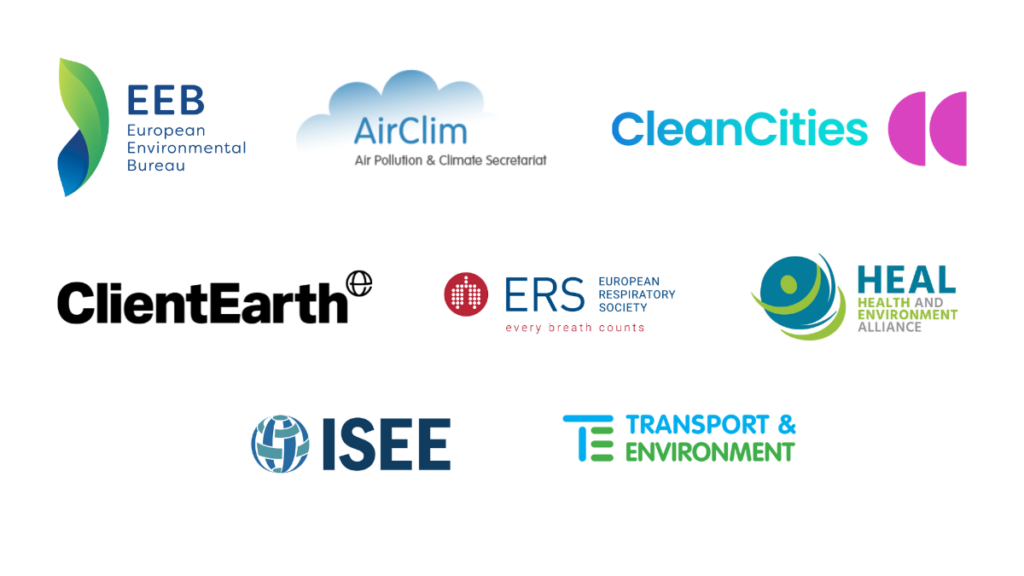The European Commission released the proposed update to the Ambient Air Quality Directives (AAQD), the first one since 2008. This proposal could improve Europe’s outdated air quality legislation as part of the Zero Pollution Package.
The revised AAQD will play a fundamental role in filling in the gaps that have been identified during the years of implementation of the existing directives, including through the dedicated Fitness Check process, and to make the instrument aligned with what science says.
While air pollution has been reduced over the last decade, current levels remain too high. More action is required to implement and improve source policies and complementary horizontal legal instruments, including domestic heating and the agricultural sector.
Sectoral legislation, the National Emissions Ceiling Directive (NECD) and behavioural changes (eg changes in the energy, transport and food systems) are all essential in reducing air pollution.
‘We welcome the publication of the proposal for a revised AAQD to strengthen the EU air quality directive, urgently needed to protect the health, the environment and save lives. Excess levels of air pollution are currently causing over 350,000 premature deaths in the EU27 per year. There is ever-increasing evidence of health impacts from asthma to organ damage to early onset dementia, often with particularly severe impacts on vulnerable groups. Now more than ever, citizens’ UN recognised human right to live in a healthy environment needs to be guaranteed,’ said Margherita Tolotto, Senior Policy Officer for Air and Noise at the EEB.
The European Environmental Bureau (EEB), ClientEarth, Transport & Environment (T&E), AirClim, Health and Environment Alliance (HEAL), the Clean Cities Campaign, together with scientists and health care providers at the European Respiratory Society (ERS) and the International Society of Environmental Epidemiology (ISEE) call on the European Parliament and Ministers in the European Council to guarantee that all Europeans can breathe clean air by strengthening the legislation in line with our key demands outlined below.
Anne Stauffer, Deputy Director, HEAL, said: ‘We are faced with a public health emergency from air pollution – tackling it requires political will for immediate and long-lasting health benefits. Where the Commission shied away from proposing what’s needed, the European Parliament and Member States now have to step up to save lives and prevent disease. This is done by fully aligning with the latest WHO guidelines by 2030 and with a strong enabling framework, including limit values and enforcement mechanisms.’
Prof. Zorana Jovanovic Andersen, Chair of the Environment and Health Committee of ERS explained: ‘The burden of disease from air pollution exposure remains unacceptably high in Europe. We need greater efforts to reduce air pollution exposure with a more ambitious path to achieving full alignment with WHO Air Quality Guidelines everywhere in Europe.’
Dr Hanna Boogaard, Co-Chair of the ISEE Europe Chapter, commented: ‘The newly proposed annual limit values will ensure important health benefits and are much stricter than the 2008 limit values in particular for PM2.5 and NO2. However, greater collective efforts are ultimately needed for a continued improvement in air quality down to, or below, the latest WHO health-based Air Quality Guidelines.’
Margherita Tolotto, Senior Policy Officer for Air and Noise at the EEB, said: ‘To solve the challenges posed by air pollution, we need stronger and more immediate action. Currently, the revision proposes superficial monitoring of ultra-fine particles, black carbon and ammonia; no alignment with science and no tools to ensure Member States are held accountable for their actions. These measures, coupled with the flawed Impact Assessment, render the proposal not fit to achieve what it should aim to: protect EU citizens’ health and the environment we live in.’
Ugo Taddei, Head of Clean Air at ClientEarth, said: ‘Revising the EU’s air quality laws is a once-in-a-generation opportunity to improve the legal framework and ensure we have world-class air quality in the EU. Everyone has the right to breathe clean and healthy air. That’s only possible if the law sets limit values that fully align with what science considers safe for our health.’
‘But for this protection to be more than numbers on a page, there need to be sanctions to hold governments accountable if they breach the new standards. We cannot afford to repeat the enforcement shortcomings of the previous Directive.”
Alex Keynes, Clean Vehicles Manager at T&E, commented: ‘By ignoring the significant emissions reduction potential of low and zero emission zones, the Commission has undermined its proposal from the start. It is still possible for policymakers to set limit values in line with the WHO recommendations; it would help incentivise these policies at the local level, accelerating the shift to zero-emission transport and clear air in cities.’
Dr Ebba Malmqvist, AirClim, said: ‘We encourage the three EU Council Presidencies – the Czech Republic, Sweden and Spain – to act as front runners of an ambitious Ambient Air Quality Directive. This would be the enabling framework for the Czech and Swedish Presidencies’ commitment of a toxic-free environment, given air pollution is the number one environmental killer. Even in troubling times, we must keep track of the European values of building a climate-neutral, pollution-free, green, equitable and healthy Europe.”
Barbara Stoll, Director of the Clean Cities Campaign, commented: ‘Setting air pollution limits that are not aligned with the latest health science is like suggesting people keep smoking but stick to light cigarettes. EU clean air laws have been the main driver for reductions in urban air pollution. Cities now need up-to-date and science-based guidance from the EU to implement further policies that once and for all deliver clean air. This is especially true for the already existing 320 low-emission zones in Europe that will be incentivised by more ambitious EU laws.’
Air pollution is largely preventable, and while current EU air quality standards, especially legally binding limit values, have proven effective in improving air quality, they are increasingly outdated. They do not reflect the latest available science.
Significant challenges remain ahead, for example, the reduction of nitrogen dioxide and particulate matter. Reducing the emissions of additional pollutants and air pollution precursors, such as ultrafine particles, black carbon, ammonia, and methane, is essential in achieving the health and environmental protection we all need.




